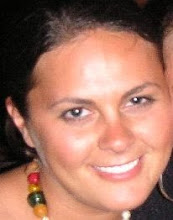WCCO morning news broadcast:
The first story was about a man who was saved from a burning car by passersby. The story included two brief interviews and lasted about a minute.
The second story was a 30 second glimpse into a shooting that occurred in Lakeland Shores. It turns out it wasn't random.
Next was a 3-4 minute exclusive look at the private life of the man responsible for the Fort Hood shooting. Clips were played of the inside of his home and special attention was paid to his Muslim faith and there was an extended clip of some emails between him and a well-known imam.
Amy Klobuschar is working to help unemployed vets (30 seconds)
The search for St. Paul's new superintendent continues and the candidates are all local except for one (1-2 minutes)
Republican Jungbauer drops out the governor's race because of troubles raising funds in this difficult economy (2 minutes)
High-tech maps will be helping people in the river valley combat floods this season, thanks to a federal grant (2 minutes)
There is a poaching controversy in Cannon Falls. It seems a world-record sized buck was shot illegally, which brings up safety issues (2-3 minutes)
News was made up mostly of local stories that dealt with economy, crime, and public figures. The weather was glossed over fairly quickly and was exclusively local.
Sports news was very quick and dealt mainly with the nuts and bolts of sports, like the new Target field.
The ads featured were for Discover credit cards, flu vaccinations at Children's Hospital, a realty company, and Sony gadgets.
The most obvious thing about watching this news is the tone of the reporter or anchor's voice. Their tone reflects the attitude they expect you to take on the issues you're watching. Additionally, some of the stories included pictures and interviews, others were glossed over, despite the impression that they were relatively important. For example, the story about Senator Klobachar was a talking point, but the story about Jungbauer included a picture, quotes, and facts about him, even though the story was about him dropping out of the governor's race.
In a typical week, I get most of my news from NPR, which is community funded news. I also watch The Daily Show and The Colbert Report, which is owned by Viacom. CNN, which is Time Warner. My internet access is via Comcast. I think the majority of the time I spend on the internet is on sites owned by Time Warner. I read mostly Harper's Magazine, which I believe is independently owned.
I don't think it's possible for a news organization to be truly unbiased. Who owns the station definitely effects the content of the station. An owner's political interests will be respected in the stories that are broadcast.
As an activity for students to critically analyze the news, I might have students create broadcasts about a book that we are reading. For example, a new broadcast about Romeo and Juliet, one from the side of the Capulets and the other from the side of the Montigues. From there, we could explore bias in the news, what it means for someone to "own" the news, how to tell if something is biased, and ways to fill in the gaps.

